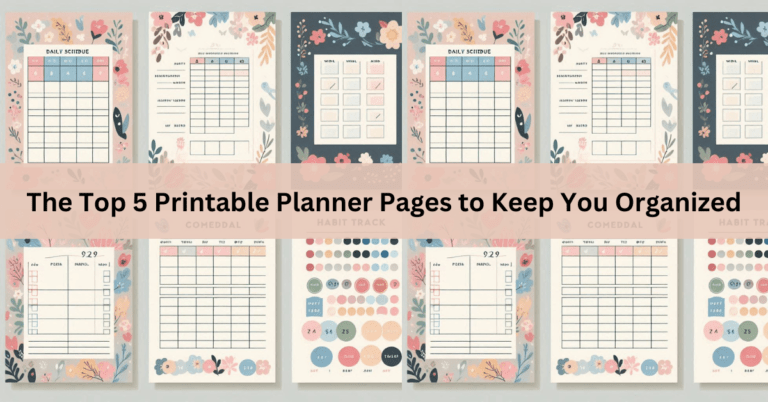How To Choose The Right Digital Product For Your Business – A Beginner’s Guide
If you’re a business owner, you know that keeping up with the latest technology is essential for staying competitive in today’s digital world. But with so many digital products on the market, it can be difficult to determine which ones are right for your business. How do you choose the right digital product for your business? That’s where this beginner’s guide comes in. Here, you’ll learn how to evaluate your needs and make the right decision when selecting a digital product. We’ll cover everything from understanding the features and benefits of different products to how to budget for the right one. With this guide, you’ll be well on your way to finding the perfect digital product for your business. So, let’s get started!
What is a digital product?
A digital product is any type of software that you can use to run your business. Digital products can range from Integrated Bar Management (IBM’s Revel program) to automated lead generation software, like Marchex’s Lead and Revenue Optimization Accelerator. Digital products also include software that helps you automate business processes, like QuickBooks’ automated invoicing feature. This allows you to keep track of your clients and quickly generate invoices each month. Digital products are often subscription-based, which means that you pay a recurring fee for access to the product’s features. Depending on the product, you may be able to try out a free version of the product to see if you like it before committing to a subscription.
Evaluating your needs
Before choosing a digital product, you’ll want to evaluate your needs and figure out what type of product you need. Here are some questions to consider: – What is your business all about? – What are your business’s specific challenges? – What are your business goals? – What are your business’s core values? – What are your business’s target customers? – What are your business’s target markets? – What are your business’s specific needs? – How much do you need to spend?
Understanding the features and benefits of different digital products
Before you start researching and evaluating different digital products, it’s important to understand what they can do for your business. Here are some things you’ll want to look for when evaluating different products: – Features – What kind of features does the product have? What are the different types of features included? – Cost – What is the cost of the product, including recurring fees? What are the costs associated with licensing the product? What are the ongoing costs associated with running your business? – Return on investment – Is the product likely to generate enough revenue to justify the cost of the product? How likely is it that the product will provide a return on investment? – Sustainability – How sustainable is the product? Is it likely to be around for a long time? – Customer support – What does the customer support look like for the product? Is the support reliable and reliable?
Budgeting for the right digital product
Before you start using your chosen digital product, you’ll want to budget for it. Here are some things to keep in mind when budgeting for your new product: – First, determine how much you need to spend on your chosen product. – Next, determine how much of that budget you want to spend on the product. – Finally, decide if you want to commit to a long-term subscription or a short-term subscription.
Researching and comparing digital products
Before you choose a single product, you’ll want to research and compare the different products on the market. You can use these digital product comparison tools to do this: – Marketect – This product comparison tool will show you the features and cost of over 250 digital products. – Customer.io – This comparison engine allows you to compare digital products based on a host of criteria. – Productivity.io – Productivity.io’s feature comparison tool lets you see the different features included in digital products. – Mintos – Mintos lets you compare multiple digital products in one chart. You can also easily compare vendors from one chart.
Choosing the right digital product for your business
Once you’ve narrowed down the different digital products in your consideration, it’s time to choose the right one for your business. Here are some things to keep in mind when making this decision: – What is the size of the market for your chosen product? – How well does your chosen product fit into your business strategy? – Are there any other products like your chosen product that would provide you with similar benefits? – How likely is it that your chosen product will generate enough revenue to justify the cost? – How long have the product’s vendors been in business? – What are the product’s customer support statistics like? – What is the product’s sustainability like? – Are there any other digital products that could work well alongside your chosen one?
Setting up and implementing your digital product
Once you’ve chosen a product, it’s time to actually set it up and implement it. There are a few things that you’ll want to do before diving in headfirst. Here are some things to keep in mind: – Read the product’s documentation – Make sure that you’ve read through the product’s documentation so that you know how to set up and implement it. – Try out a free version of the product – If possible, try out a free version of the product to see if you like it before committing to a monthly or annual subscription. – Set aside some time to learn and adapt – Setting aside some time to learn and adapt to the product is critical if you want to get the most out of your purchase. – Research comparable products – Once you’ve set up your chosen product, you’ll want to research comparable products so that you can see how you stack up to your competition. – Optimize your sales funnel – Optimizing your sales funnel is critical after you’ve implemented your chosen product. – Set up auto-updates for your chosen product – Make sure that your chosen product has auto-updates so that you don’t miss important updates and patches.
Monitoring and optimizing your digital product
After implementing your chosen digital product, you’ll want to stay tuned for new features and updates. Make sure that you follow these steps to stay up-to-date with new features and updates: – Subscribe to the product’s mailing list – Make sure that you’re subscribed to the product’s mailing list so that you know when new features and updates are released. – Subscribe to online forums – Make sure that you’re subscribed to online forums dedicated to the product so that you can get the latest feedback and suggestions. – Follow your vendors on social media – Follow your vendors on social media such as Facebook, Twitter, and Instagram so that you can stay up-to-date on new features and updates.
Troubleshooting and customer support
Digital products come with a lot of benefits, but they’re not perfect. As with any product, there are going to be some bumps along the way. Here are some ways to deal with common issues: – Make sure that your chosen product has a strong support team and a good reputation for customer support. – Make sure that you’ve read the product’s documentation. If you can’t figure out how to use the product, chances are that the team will be able to help you. – Try out the product’s free version. If the free version of the product doesn’t do what you need it to do, chances are the paid version will do the job better. – Try out paid vendors in the product’s space and see if you like them. You can use these comparison tools to compare and see which products you like best. – Keep your product updated. Make sure that you keep your product updated so that you’re protected against any possible threats.
Staying up-to-date with the latest digital products
Digital products come and go, so it’s important that you stay up-to-date and follow the latest innovations in






